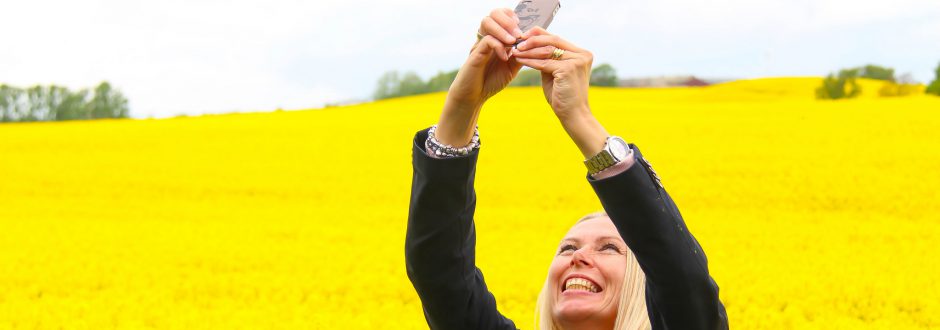The ‘selfie’ may provide yet another lens through which to view our approach to the Lenten season, writes Monica Dutton.
BY Monica Dutton
The ‘selfie’ has unprecedented currency with the millennial generation. The fascination with taking self-portrait photographs on mobile phones, in various poses and locations, and sharing them on social networking services, has quickly become a global phenomenon.
Selfies enable the ‘millennials’ to upload every aspect of their lives and to share them with family, friends and the world in general. It would seem that not a moment of their existence goes unphotographed, unrecorded, undocumented – and the countless ‘likes’ posted by friends on Facebook and Instagram ensure continuous uploads.
It is estimated that worldwide, 93 million selfies are taken each day, and the fad is not limited to the younger members of society. Indeed, the selfie was a recent Australian Prime Minister’s preferred method of relating to his constituents!
The latest ‘must-have’ – the ‘selfie-stick’ – allows even greater access to new angles, group photos and panoramic background scenery to enhance the shot. Their popularity is such that during the recent Sydney summer holidays a hybrid forest of them materialised on the harbour foreshore!
While many would view this egoistic preoccupation as a totally narrow and self-obsessed view of the world, there may be something in this explosive ‘Gen Y’ trend for us all to consider over the coming weeks.
The selfie, by definition, is a focus on self. This may be seen as self-motivated and self-indulgent. Shifting the focal point, however, may provide yet another lens through which to view our approach to the upcoming Lenten season.
Lent 2015 may well be the time to take our very own ‘selfie’; the time to take a snapshot of our spiritual selves and to critically examine ways to wholeness and peace.
The recurring cycle of Lent offers ever-changing opportunities for us to see things differently. Just as the beautiful coloured glass pieces in the kaleidoscope fall into new and different patterns on each rotation, the pieces of our lives fall differently with the turning of each year. Life’s experiences, exchanges and encounters present new challenges, perspectives and ways of being.
Our approach to the cyclical nature of Lent therefore changes from year to year. The Lenten observances we undertook as children or young adults make way for new patterns and practices as we progress along the spiritual path.
In the context of the Lenten season, the examination of our personal spiritual selfie requires us to look closely at our lives in the light of the Gospel message and to contemplate what is missing; to invite the presence of God into our lives and to discern the direction this awareness holds for us.
The practice of self-reflection is not new. The uncompromising view that the unexamined life is not worth living has been attributed to Socrates in the fifth century BCE. The practice of the daily examen encouraged by St Ignatius over 400 years ago is also central to a number of contemporary forms of spiritual exercises.
While St Benedict considered the ideal of the monastic life to be a continuous Lent, he recognised that few have the strength for such a life (RB, 49). The idea of freely taking on something above and beyond the usual during Lent provides an opportunity to aspire to a more Christ-centred existence. Perhaps it is only during Lent then, that we discover the resolve to undertake the spiritual selfie.
Through self-examination, the traditional Lenten practices of prayer, fasting and almsgiving can be nuanced by critically engaging the spiritual compass. Do our current practices contribute to our participation in a daily personal conversion to wholeness and holiness?
It is often easier to read books about spirituality and the lives of inspirational people for example, than to spend time developing and nurturing our relationship with God through personal and communal prayer.
It is easier to give up red wine and chocolate than to turn away from hard-hearted or limiting actions and behaviours which prevent us from becoming the best possible version of ourselves.
And it is easier to donate to charity online than to engage with people on the margins experiencing poverty, exclusion and injustice in all its forms.
The conventional idea of “giving up something for Lent” now appears to be a short-term measure and somehow seems to miss the point. Where there is such a clearly defined end point for personal change, there is a very real possibility of regressing to our former selves as soon as the Easter eggs have disappeared. It minimises opportunities for authentic spiritual growth and sustained conversion of life.
Critically reflecting upon our spiritual selfie during the days and weeks of Lent however, allows us to see where the cracks are appearing; where we are less than our best selves and where we need to make permanent, life-giving changes to our priorities and patterns of behaviour.
Rather than casually dismissing the much maligned selfie – perhaps it is time to go with the populist trend and embrace it as a way to new perspectives for reflection during the Lenten season.
